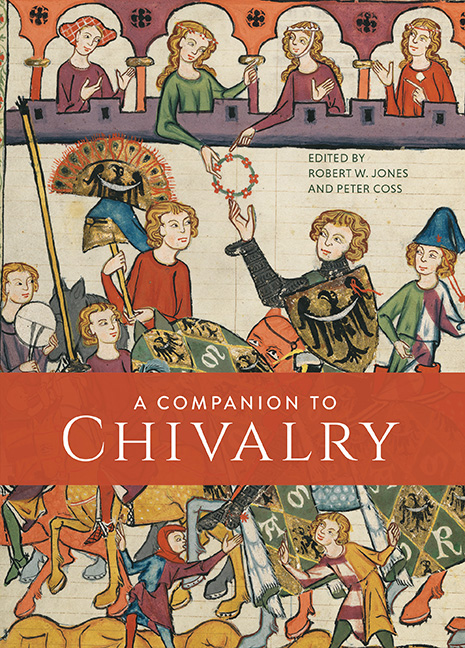Book contents
- Frontmatter
- Contents
- List of Illustrations
- List of Contributors
- Introduction
- 1 The Origins and Diffusion of Chivalry
- 2 The Organisation of Chivalric Society
- 3 The Secular Orders: Chivalry in the Service of the State
- 4 The Military Orders
- 5 Marshalling the Chivalric Elite for War
- 6 Chivalric Violence
- 7 Chivalry in the Tournament and Pas d'Armes
- 8 Heraldry and Heralds
- 9 Arms and Armour
- 10 Constructing Chivalric Landscapes: Aristocratic Spaces Between Image and Reality
- 11 Gendered Chivalry
- 12 Chivalric Literature
- 13 Manuals of Warfare and Chivalry
- 14 The End of Chivalry? Survivals and Revivals of the Tudor Age
- 15 Chivalric Medievalism
- Select Bibliography
- Acknowledgements
- Index
15 - Chivalric Medievalism
Published online by Cambridge University Press: 24 October 2019
- Frontmatter
- Contents
- List of Illustrations
- List of Contributors
- Introduction
- 1 The Origins and Diffusion of Chivalry
- 2 The Organisation of Chivalric Society
- 3 The Secular Orders: Chivalry in the Service of the State
- 4 The Military Orders
- 5 Marshalling the Chivalric Elite for War
- 6 Chivalric Violence
- 7 Chivalry in the Tournament and Pas d'Armes
- 8 Heraldry and Heralds
- 9 Arms and Armour
- 10 Constructing Chivalric Landscapes: Aristocratic Spaces Between Image and Reality
- 11 Gendered Chivalry
- 12 Chivalric Literature
- 13 Manuals of Warfare and Chivalry
- 14 The End of Chivalry? Survivals and Revivals of the Tudor Age
- 15 Chivalric Medievalism
- Select Bibliography
- Acknowledgements
- Index
Summary
In Life on the Mississippi, Mark Twain cites Don Quixote and Ivanhoe as ‘a curious exemplification of the power of a single book for good or harm.’ In his opinion, ‘The first swept the world's admiration for the mediaeval chivalric–silliness out of existence; and the other restored it.’ Twain argues that this is of catastrophic historical importance and that Ivanhoe's author Sir Walter Scott is, through the ‘change of character’ he inspired in Southern gentlemen, ‘in great measure responsible for the [American Civil] war.’
Even though Twain is being hyperbolic here, the identification of Southern gentlemen with the perceived values of chivalry points to its growing influence and cultural effect in the nineteenth century. It is possible, of course, to find instances of chivalric medievalism in earlier times, but the best known of these seem to function either ironically (as in the case of Don Quixote), or symbolically, as in Edmund Spenser's Faerie Queene, which uses the structure of the chivalric quest to represent the English Christian's pursuit of moral virtues. Yet the revival of interest in medieval style and behavior in the late eighteenth and nineteenth centuries simultaneously brought about a new interest in taking chivalry literally, and Twain raises the question of the consequences of carrying through chivalric codes of conduct. In both Life on the Mississippi (1883) and A Connecticut Yankee at King Arthur's Court (1889) he represents chivalry as elitist, racist, impractical, superstitious, and the inspiration for pointless violence, and some later adaptations of chivalry by racist groups would seem to confirm his point of view. Many of his contemporaries, however, would have disagreed with him. The neo–medievalism of the present day seen in video games and film and television admittedly tends to equate knights in armor with extreme violence: medieval weaponry is the vehicle for brutal hand–to–hand fighting, often accompanied by treachery rather than chivalric values. In nineteenth–century Britain, in contrast, chivalric medievalism was associated less with violent action than with style and self–image. Nineteenth–century chivalric medievalism nevertheless shares in common with the majority of medieval–themed video games and movies a hybrid–period approach to representing chivalry, focusing less on authenticity than on representing what contemporary audiences will recognize as medieval.
- Type
- Chapter
- Information
- A Companion to Chivalry , pp. 301 - 322Publisher: Boydell & BrewerPrint publication year: 2019



